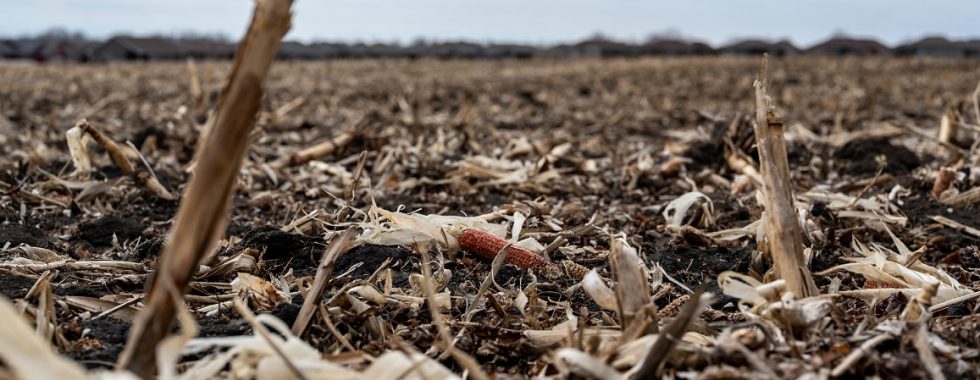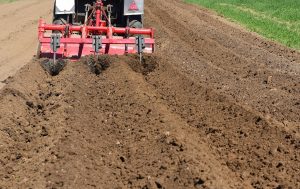Breaking Ground: The Pros and Cons of Reduced-Till Farming
Agriculture is undergoing a transformation, with sustainability taking center stage. In light of this shift, modern agriculture faces a critical dilemma. It must feed a growing global population while protecting the environment and preserving the long-term health of our soils. No-till farming, along with its sibling practice, reduced-till farming, has emerged as a promising solution to this challenge.
While there may be concerns about potential short-term yield reductions during this transition, these practices offer long-term benefits for soil health, environmental sustainability, and overall farm resilience.
This article explores the considerations, benefits, and disadvantages of transitioning to no-till and reduced-till farming, shedding light on how farmers can manage this transition successfully.
Advantages of no-till farming
1. Soil Health Preservation
Soil Structure
No-till and reduced-till systems offer several benefits for soil health. Over time, they improve soil structure, reduce erosion, and increase soil moisture retention.
One of the defining features of no-till farming is the minimal disturbance of the soil. Traditional plowing or tilling can disrupt the soil structure, making it more susceptible to erosion. In no-till systems, there is no deep soil inversion, preserving the integrity of the topsoil.
In addition, leaving crop residues on the field contributes to the accumulation of organic matter, which helps binding soil particles together, forming soil aggregates.
Therefore, aggregates create a stable soil matrix that is less prone to detachment and erosion .Furthermore, the aggregates create small pores in the soil, which act as reservoirs for water, enhancing the soil’s ability to retain water. They also reduce the risk of compaction and crusting, that inhibit water infiltration.
This helps in conserving soil moisture, particularly in arid or semi-arid regions, and ensures that crops have consistent access to water, even during dry periods.
Enhanced Biological Activity
No-till and reduced-till systems create a conducive environment for soil microorganisms and macroorganisms. These soil organisms play a vital role in nutrient cycling, organic matter decomposition, and overall soil health. With reduced disturbance, their populations can flourish, contributing to improved soil structure and fertility.
2. Enhanced Crop Productivity
Yield Stability
While no-till and reduced-till systems may not always result in immediate yield increases, they often provide more stable yields over time. Reduced soil disturbance and erosion prevention contribute to more consistent crop production, even under adverse weather conditions.
Reduced Input Costs
Reduced-till practices can lead to cost savings for farmers by decreasing the need for fuel, labor, and equipment associated with intensive tillage. These cost savings can improve the economic viability of farming operations.
Improved Crop Health
By maintaining a residue cover on the soil surface, no-till and reduced-till systems can reduce the spread of certain crop diseases and pests, leading to healthier plants and potentially reducing the need for chemical interventions.
3. Environmental Sustainability
Carbon Sequestration
No-till and reduced-till practices can contribute to carbon sequestration, as they promote the accumulation of organic matter in the soil. On a large scale, this can help mitigate climate change by reducing the release of carbon dioxide into the atmosphere.
Reduced Environmental Impact
By minimizing soil erosion, reducing runoff of agricultural chemicals, and conserving water resources, no-till and reduced-till farming systems have a smaller environmental footprint compared to conventional tillage.
Conventional tilling
Challenges with no-till farming
Initial Yield Reduction
Farmers often experience a temporary decrease in yields when shifting from conventional tillage to no-till or reduced-till practices. This can discourage adoption, especially in the short term. Yield reduction may be a result of a reduction in nutrient availability (e.g., immobilization of nitrogen), reduced germination, top soil compaction, increased weed pressure, and increased pest and disease pressure.
It’s important to note that while yield reductions can occur initially in no-till systems, they are often temporary. Over time, as the soil and ecosystem adapt to reduced disturbance, and with appropriate management practices, no-till farming can lead to more stable and sustainable yields.
Weed Management
In no-till farming, weed management poses distinct challenges compared to conventional tillage practices. These challenges stem from the practice of retaining crop residues on the field surface and minimizing soil disturbance, both of which offer significant benefits for soil health and conservation. However, these same factors can create conditions that are favorable for weed growth.
The presence of crop residues provides a protective environment for weed seeds, allowing them to persist on the field’s surface. This can make it more difficult to prevent weed seed germination and emergence, especially when there is abundant sunlight.
Furthermore, the reduced soil disturbance in no-till systems means that weed seeds may not be buried as deeply in the soil, potentially leading to a buildup of weed seeds near the surface. This can result in ongoing challenges with weeds in no-till fields.
While cover crops are commonly integrated into no-till rotations to help suppress weeds, their effectiveness can vary depending on factors such as the choice of cover crop, timing of planting, and local environmental conditions. In some cases, cover crops may inadvertently create niches that favor the growth of specific weed species.
Effectively managing weeds in no-till systems often requires a multifaceted approach that combines the use of herbicides, cover cropping, crop rotation, and integrated weed management strategies.
Pest and Disease Pressure
No-till systems can sometimes create environments conducive to certain diseases and pests. The presence of crop residues and reduced soil disturbance can provide shelter and resources for pests and pathogens, requiring careful pest monitoring and management.
Soil Compaction
While no-till farming can reduce compaction overall, it does not eliminate the risk of compaction entirely. Compaction can still occur in no-till fields, especially in areas where heavy machinery or livestock traffic is frequent. Therefore, farmers practicing no-till may need to monitor soil compaction and implement strategies to alleviate it, such as using controlled traffic systems or targeted subsoiling in specific areas of the field where compaction is a concern.
Managing the Transition
Traditional practices are deeply rooted. Farmers may resist change due to the fear of disruptions or uncertainties associated with no-till and reduced-till farming.
To overcome these challenges and facilitate the transition, farmers can consider several strategies:
Crop Rotation and Diversity: Implement diverse crop rotations and cover crops to suppress weeds, enhance soil health, and disrupt pest cycles.
Precision Agriculture: Utilize precision technologies for accurate planting, resource allocation, and data-driven decision-making.
Weed Management Strategies: Employ integrated weed management practices that combine cover crops, targeted herbicide use, and crop rotation.
Education and Training: Invest in farmer education and training programs to acquire the knowledge and skills necessary for successful adoption.
Long-Term Perspective: Focus on the long-term benefits of enhanced soil health, reduced environmental impact, and cost savings.
Government and Market Support: Advocate for policies and market incentives that favor sustainable farming practices.



